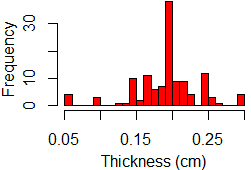
Figure 1. First cut. The larger piece was sectioned.

Figure 1. First cut. The larger piece was sectioned.
The Jurassic Navajo Sandstone of southern Utah in southwestern USA commonly hosts concretions cemented by iron oxides (Potter 2011, Loope 2012). The concretions appear to have formed by filling pore spaces between the aeolian sand grain matrix that hosts them, without disturbing the sand matrix.
Investigated here is the internal distribution of cements and colouration within an elongated oblate concretion (figure 1) about 30 cm long, 15 cm wide, and 5.5 cm high that was found resting on the surface in an area with several others much like it. The bedding planes visible within the concretion sections are thought to have been subhorizontal.
The concretion was sectioned serially at approximately 2mm intervals to produce a stack of images, using the procedure described at Serial Sections. The resulting stack of images was assembled into the frames of a video (below).

Figure 4. Histogram of slice thickness (cm)
Although the aim was to remove 2 mm of sample per slice, the actual measured thickness of the remaining sample showed some jitter around a mean of 1.96 mm per slice, as shown in the histogram in figure 4.
The resolution is much higher in the plane of the photographs than between slices. The resolution of the original photos is about 52 microns per pixel (14.9 cm in the sample maps to 2883 pixels); the mean distance between slices is about 1960 microns. To approximate the true shape of the voxels in synthesized images, the photographed image plane is repeated or interpolated. The number of repetitions required to approximate true shape depends on the processed size of the photographic plane. For example, at quarter size the photographic plane would have a resolution of approximately 208 microns/pixel and therefore true-shape voxels would be synthesized by 1960/208 = 9.4 repetitions of the image plane. Since there is some jitter in slice thickness, better would be to set the repetitions of a particular slice proportional to the measured thickness of that slice, instead of using the average.
QuickTime offers the best 'scrubbing' control (the ability to move forward/backwards smoothly, frame by frame), but HTML5 (using a controller I wrote) has reasonable frame control and better 'poster image' control. Select which you'd like using the controls below. If none work for you, here are direct links to the video files: video 1, video 2, video 3.
Video 1. Side view
The two synthesized views below are orthogonal to the view above.
Video 2. Top view (rotated right 90 degrees with respect to video 1)
Video 3. Side view (perpendicular to video 1 and 2)
Excellent tools are available to explore these image stacks offline, eg., ImageJ; see Serial Sections for more information. An image stack can be obtained by downloading video 1 (by right-clicking on the link above and saving it to your computer) and using Quicktime or similar tools (eg., VLC) to export the video to an image sequence, which can then be imported into ImageJ (eg., for Orthogonal Views).
All videos here have been downsized. To obtain full resolution images, contact me below.
Loope, David B., et al. (2012). Rinded iron-oxide concretions: hallmarks of altered siderite masses of both early and late diagenetic origin. Sedimentology 59.6 (2012): 1769-1781.
Potter, Sally L., et al. (2011). Characterization of Navajo Sandstone concretions: Mars comparison and criteria for distinguishing diagenetic origins. Earth and Planetary Science Letters 301.3 (2011): 444-456.
If you have suggestions, please send a comment using this web form.